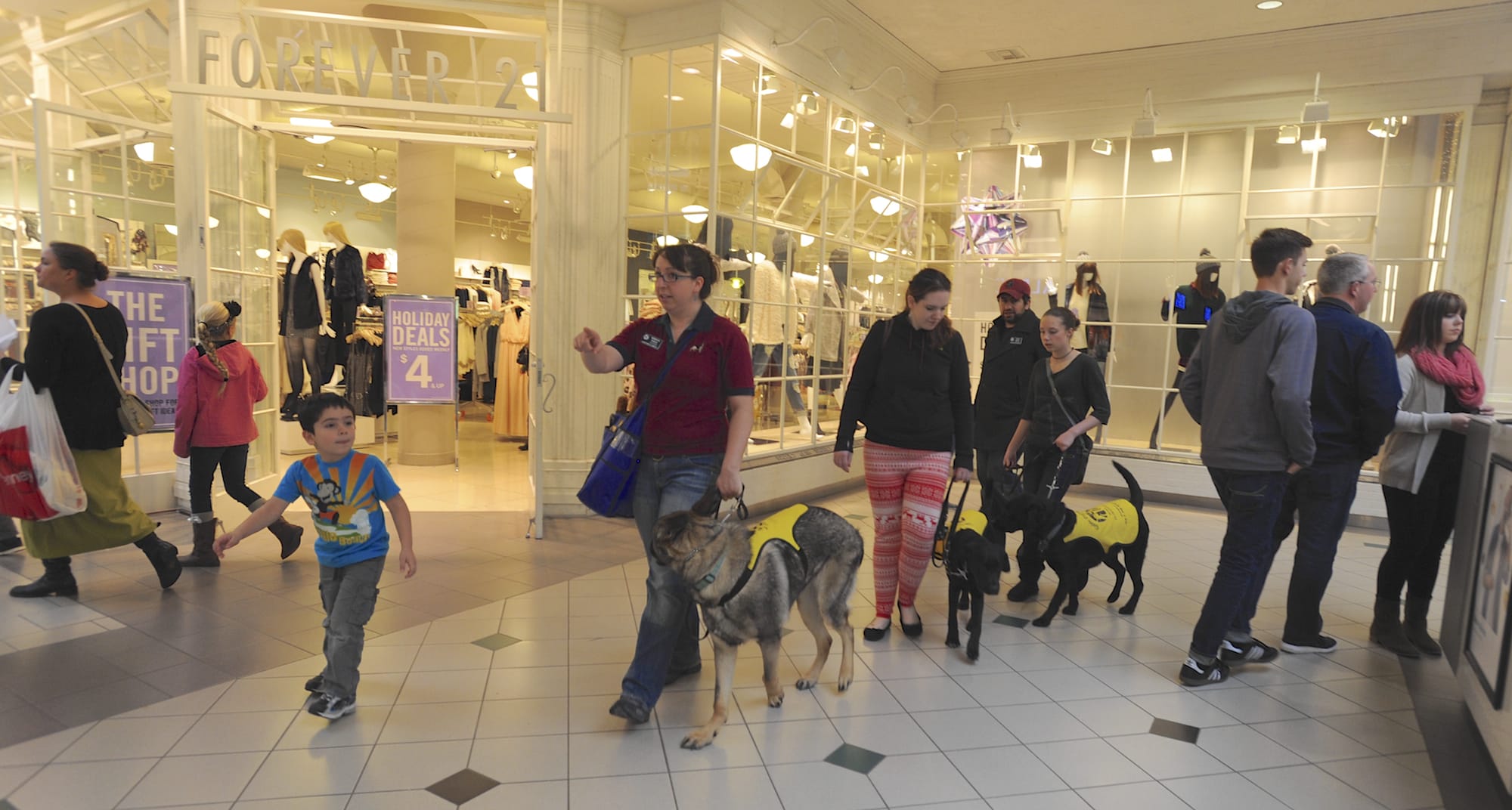On the Web
More information about Guide Dogs of America, including how to become a puppy raiser, is available at:
www.guidedogsofamerica.org
Becca Khalil isn’t sure how many dogs she’s raised over the years. The Vancouver resident lost count somewhere around 20.
Most of them didn’t stay with her long. They were never meant to — Khalil is part of a local group of volunteers that trains service dogs to be paired with visually impaired people. The group, known as Sightseers, works with Guide Dogs of America, a larger program based in Sylmar, Calif.
Khalil and other trainers work with each dog for a little more than a year in most cases. Then they say goodbye, and send them back to Sylmar to complete their training and find a long-term partner.
“When you know from the beginning that they’re never going to be yours, it’s hard, but it’s different,” Khalil said.
Sightseers currently counts four dogs and about a dozen families among its ranks. Each dog is trained by a particular family, but the group often takes the animals on joint outings as part of their training.
All four dogs — Padmay, Zeus, Izaac and Rowa — spent a recent Saturday at the Westfield Vancouver mall. The setting was filled with sights, sounds and smells to grab a dogs attention, and that’s by design. Trainers want the dogs to be able to stay focused even in the most difficult environments, said Vancouver resident Karen Allenby.
“Distractions happen all the time,” Allenby said. “You can’t help it.”
Allenby, her daughter, Sara, and other trainers watched the dogs closely as they walked around the mall. If the dogs began to pull, stray or veer toward someone, a firm tug on the leash brought them back in line. The group practiced walking on stairs, near store windows and into elevators.
At one point, the group took each dog into the food court for a true test. As the dogs lay on the floor under a few tables, trainer Jill Wardrop began placing tater tots inches from each dog’s feet.
The dogs resisted temptation, leaving the food alone. Then Wardrop upped the ante, resting a tot on each dog’s foot. Still, they resisted. One dog looked away, as if pretending the tantalizing treat wasn’t there at all.
“They’re using all of the self-control their little hearts possess right now,” Khalil said.
But the dogs weren’t allowed to eat the tater tots at the end of the exercise. That’s because they aren’t trained with treats, only verbal praise, said volunteer trainer Steve Hoppes. The dogs must be able to withstand distractions and temptations that a visually impaired partner may not see, he said.
Hoppes and his wife, Judi, have trained 17 dogs with Sightseers, he said. Their current dog is Izaac, an 11-month-old German shepherd in the midst of what Hoppes calls the “teenager” phase for many dogs. That’s when the animal seems to forget much of what it’s learned, only to gain it back later, Hoppes said.
Groups such as Sightseers take in dogs from Guide Dogs of America when they’re about two months old. They continue training until they’re about 18 months old, when they return to complete the program and eventually graduate.
“We’re kind of like elementary school, middle school and high school,” Wardrop said. “And then GDA is like college. They get the advanced training.”
Seeing their dogs graduate is one of the most rewarding parts of training them, Khalil said. Occasionally, volunteers are able to keep tabs on the animals after they graduate or even meet their permanent partners.
But trainers say they’re mindful of the ultimate goal: a successful service dog. That means making sure the animals don’t become too dependent on their first families before it’s time to move on, Khalil said.
“They’re not going to be ours, so they need to be able to work with the person who’s going to ask them to do something,” she said. “You don’t want them to fail and not become a service animal because they’re too attached to you.”




